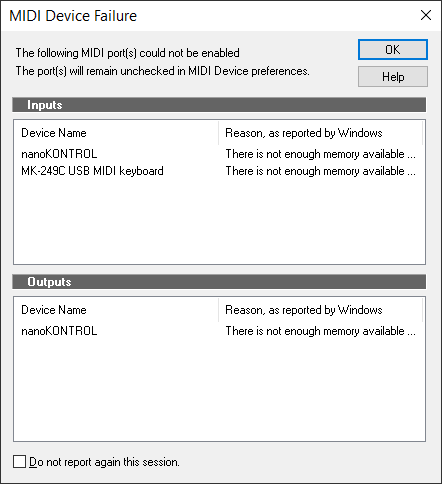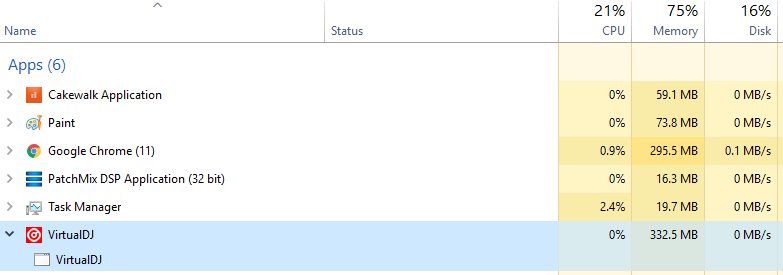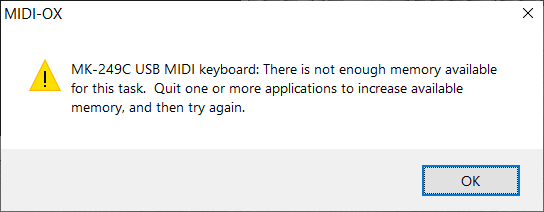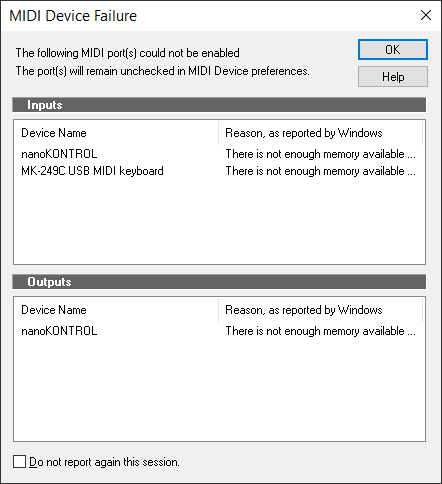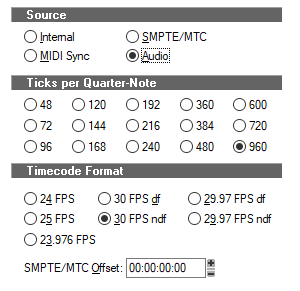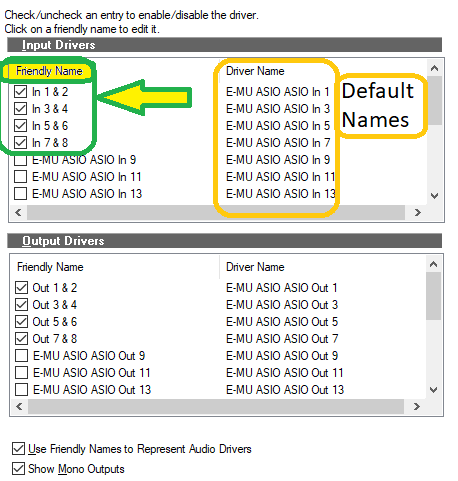-
Posts
5,663 -
Joined
-
Days Won
1
Everything posted by User 905133
-

can the sensitivity of the SMART grid be adjusted
User 905133 replied to Gill20's topic in Cakewalk by BandLab
I was afraid someone was going to ask how I managed to get the second state in the first place! I got so into figuring out the other things, I forgot how I got to state 2! Just now, when I opened up a New Project (either "Blank" or "Empty," Ctrl+Shift+N allowed me to toggle. Not sure I did anything special. (With my previous post, I did the tests with a tune-in-progress.) I did not try using the mouse yet, but I did manage to figure out the non-repeating key issue--it repeats in Notepad (for example), but not here (Cakewalk). As these screen shots show (I hope), (1) I opened a project with Snap off. (2) When I initially pressed N, Cakewalk turned Snap on. (3) After about a second while holding N down, the alternate settings showed up temporarily. Yeah--I noticed that Engineered in Boston, MA! My usual theme didn't show the track view snap lines very well, so I looked for others, and grabbed Boston Flowers! Perfect for the spring time! ---------------------------------------------------------------------------------------------------------- Clarification 1: Ctrl+Shift+N seems to swap two snap/grid states on a non-temporary basis. (Let's call them "State A" and "State B" for now.) Upon rebooting a saved project, "State A" becomes the state the project was saved with if the project was re-saved. ---------------------------------------------------------------------------------------------------------- Clarification 2: "N Held Down" seems to be a temporary state. [See screen shot (3) above.] So the Initial N press turned Snap On. [See screen shot (2) above.] Holding N down for more than 1.225 seconds gave me State B temporarily. [See screen shot (3) above.] Releasing N returned to State A. [See screen shot (2) above.] ---------------------------------------------------------------------------------------------------------- -

can the sensitivity of the SMART grid be adjusted
User 905133 replied to Gill20's topic in Cakewalk by BandLab
I still don't use these features, but I am trying to understand them because maybe then I might use them. The other day I tried David's sample project and I was able to shift between two states that had different duration lines in Track View. Today, I tried to create my own toggle states. Toggling between two states seems to work for me and seems to work whether I have Snap on or off. It also seems to me that the toggle not only switches between two resolutions, but between the Snap On/Off state. As well, the Note Draw Duration toggles between two states. Evidently the To/By Snap State also toggles. Last week (before I did this), I tested both Workspaces and Screensets. I just tested them again (just now) and it seems that the two states change regardless of Workspace or Screenset unless I didn't do it right. However, it seems to me that the two states (current and secondary) were saved with my test project. I am not sure how this was different in other versions. So, if my understanding (as I have written it up here) consistent with that others are seeing? Or am I missing something regarding this Ctrl+Shift+N toggling feature? For example, are there other things that get toggled? Still not sure if I will use this feature; just trying to understand it. Thanks. -

How to use Numark Virtual DJ with cakewalk?
User 905133 replied to bobernaut's topic in Cakewalk by BandLab
I know someone who has a larger model and if I weren't hunkered down I'd ask if I can bring my laptop over to see if I can connect it to Cakewalk and try to figure it out. (I wondered about the possibility after I saw the controller in action like 6 or 8 months ago, but they are out of my budget.) I don't think the issue is lack of memory in your system. I don't know how that works, but I always assumed the issue was due to some sort of midi device conflict, as id the OS/Software is saying--"Some other software [possibly a device driver] has control of this device, I cannot access it." I will have to defer to others with more experienced with such things as control surfaces, devices, etc. Maybe GC is extending their return policy to 90 or 180 days due to the worldwide pandemic? BTW, yesterday I tried the Virtual DJ software a second time, shut it down, and then had the same issue with Cakewalk and my usb keyboard. I did not see the Virtual DJ software in Windows' task manager, so I couldn't kill it to that solved the midi device lock up. I ended up rebooting my PC. Hmmmm. As a followup test, I just booted the Virtual DJ 2020 software. I did not "Connect" online when it asked, but with the limited feature set, the free software works to play tunes. I then booted Cakewalk and got this: This tells me that the VirtualDJ 2020 software has control of those devices, just like MIDI-OX would--but only for those devices I have selected in MIDI-OX. I think its a Windows/MIDI device thing. Again, maybe someone with more expertise can explain why and make suggestions. The only thing I can suggest being totally unfamiliar with DJ devices as controllers (except for Midiman Dm2--something that last worked under Win98SE), is to try using the Numark unit from a PC reboot without running any other music software other than Cakewalk. PS: Please note that the memory message is being reported to Cakewalk by Windows. ADDENDUM: With the free VirtualDJ 2020 software playing two tunes, I booted Cakewalk and had the three MIDI devices locked out. Using Windows' Device Manager, I killed VirtualDJ 2020 [End Task], went to Cakewalk Preferences and had the usb keyboard locked up, not nanoKontrol. After rebooting my PC, I tried another test: (1) got VirtualDJ 2020 playing two tunes, (2) started Cakewalk (and got the midi device lockout message), and (3) killed VirtualDJ 2020. This time, I was able to select my three midi devices from Preferences. BTW, maybe you can use the controller and software independently and use any audio output it has in Cakewalk. I'm not sure if the device lockout also affects audio channels. Again, I defer to others to explain this and to offer possible suggestions. Maybe my experiences will be helpful. I would be interested in your results, because I have thought about saving up for one of those controllers myself.- 4 replies
-
- soundcard
- virtual dj
-
(and 1 more)
Tagged with:
-
I heard this too, saw the details in a post, and tried it myself. I am not sure where the posts I saw are--too many references to TTS-1. I think it only gets inserted automatically under certain conditions. Maybe whoever posted that will chime in. Just wanted you to know you are not misremembering that!
-

how do I setup a standard startup project?
User 905133 replied to Matteo Bosi's topic in Cakewalk by BandLab
I believe this is what you want: see the section on to specify the default project template. -
I accidentally replied in an official feedback thread. Since my reply has the results of my testing as a user, I have moved it here. This thread has information about meter range settings. The info there might apply to your issue as well. Perhaps more relevant, if you are talking about last-state UI appearance, try setting Worspaces to "None." If you are using another Workspace that doesn't have meters, when you load a project, that Workspace will get reinstated. However, with "None," from what I have seen from playing around with Workspaces, last state UI settings do not seem to get overridden. Just tested this. I never use horizontal meters. So to test, I changed a project to use horizontal track meters. I then saved that as Screenset 1. (Not sure if this was necessary, but I did it as part of the test.) UPDATE: Screenset 1 now has the horizontal track meters; my other screensets have retained my vertical track meters. Then I saved the project, reloaded it, and tested with different Workspaces and the "None" Workspace. For each re-loading when I used "None," the horizontal meters loaded with the project. Other projects load with my usual meters (vertical).
-

How to use Numark Virtual DJ with cakewalk?
User 905133 replied to bobernaut's topic in Cakewalk by BandLab
I can't tell you anything about your specific hardware. As for the "Not enough memory" message, I have gotten that many times when SONAR/Cakewalk cannot access a midi device because another program is using it. In my case, it almost always happens when I an testing a midi device with midi-ox, forget that I didn't close that down, and then boot Sonar/Cakewalk. Are you trying to use the DJ hardware as a midi device in SONAR/Cakewalk while other midi software has control of it? If so, does Cakewalk have the memory issue if you don't have the other software running first? Maybe someone else has a Numark unit and can give you more thorough advice. Good luck. UPDATES: I downloaded the Virtual DJ software and then booted MIDI-OX. Here's what I got: Then I shut down MIDI-OX, and with the Virtual DJ software still booted, got this when I booted Cakewalk:- 4 replies
-
- soundcard
- virtual dj
-
(and 1 more)
Tagged with:
-

Setting Up midi track to send CC Changes
User 905133 replied to Shawn T's topic in Cakewalk by BandLab
I saw this yesterday but was too stressed out to ask intelligent questions about it. I'll try now. What are you using to generate, create, or input the notes and or CCs into a midi track? Is the midi track set up to send midi data out to the interface port where the Axe FX gets the midi data? If playing live from a controller, is the midi echo button lit/on? When I send midi data to external gear, I tend to use a usb/midi keyboard with Cakewalk configured in such a way that I can record midi data from my keyboard as well as play it live. I wasn't sure if you were doing something similar. -

Help on midi file created by me
User 905133 replied to Helio Dias Vieira's topic in Cakewalk by BandLab
On my current PC, I opened both of your files from the desktop with Sonar 3.1.1 and Sonar 8.5.3. Neither of those had the problem you described. I have earlier versions on my XP PC (and ones in between those), but not the version you have (Cakewalk Pro Audio). The closest I have that looks like that is Cakewalk Express. Maybe someone else has some suggestions for this problem. -

Help on midi file created by me
User 905133 replied to Helio Dias Vieira's topic in Cakewalk by BandLab
I will take a look. I played both while watching the staff scroll by and didn't notice anything unusual. I took a very quick look at the event list, specifically for unusual durations. I will look more closely esp. at measure 117.3. My clock settings in Cakewalk are as follows, but I am not sure that would cause the issue you have. In both cases, I downloaded the files in my browser and clicked the files to open. I will try a different method to open them to try to replicate the issue. Quick addendum: I opened both from recently open files and didn't find any unusual durations. I will now try (1) downloading the files again and (2) opening the files by dragging them into the track area. Second update: I downloaded the files again, this time saving them to my desktop. Then I tried two other methods of opening each: (1) Opening up a New > Empty project and dragging the files in to the track area and (2) just dragging the files onto the Cakewalk desktop itself (that is, without opening a project first). I did not see any unusual durations. Under all four conditions, the events looked as above. I also looked to see if there was any unusual sysex (as a bank or inline), but didn't see anything. If I can think of another way to replicate the problem, I will give it a try. -

Help on midi file created by me
User 905133 replied to Helio Dias Vieira's topic in Cakewalk by BandLab
I would defer to Variorum's binary analysis; I just did a very preliminary look: opened each file; looked for the presence of midi data; looked at the data in Staff View. In both there are notes in measures 16 through 67 and then measures 83 to 119. -
I can relate! A few years ago I looked inside one of my Casio VZ8m modules and decided I did not have the dexterity or skills to get to the battery and replace it. Fortunately I had backed up my patches as sysex banks in pre-Cakewalk ProAudio *.wrk files--and they still work! Can't do that with a VSTi/DXi that no longer works simply because its old.
-
I do not use shift-L to set loop points, so I looked up the key assignment in preferences. I found this, which seems to imply you need to have your selection points (From, Thru) set first. Just a guess. I use the Loop Module in the Control Bar and/or drag the loop start/loop end markers.
-
I test drove the web-browser-based Bandlab two or three times. I explored (very minimally) the potential to export Bandlab projects (*.blx) and then import them into Cakewalk. So, I know it can be done; I just can't tell you how. Not sure if this is what you tried already; if not, maybe the info would he helpful. If so, I can look up the links and add them here--but I think the sections are in the Reference Guide and in one of the Feature Updates from a few months ago. I seem to recall it was listed as a feature preview.
-
-
@Lord TimThank you for spelling out what I was not awake enough to explain or to make cut-and-paste screen shots! Preferences: 16 Ins 16 outs: Selectable:
-
Are 1, 3, 5, and 7 set up as stereo pairs?
-

can the sensitivity of the SMART grid be adjusted
User 905133 replied to Gill20's topic in Cakewalk by BandLab
Sorry. I was really just trying to suggest you try Workspaces if you haven't done that already. As an afterthought, I tried seeing if the grid resolution settings in the PRV would get saved to and restored from a customized Workspace. It was just as a test-of-concept. I have had success configuring many different settings. I have also had some settings that I couldn't get to work the way I wanted. However, now that I see what you want (thanks for the images; it helps!), I am not sure if switching Workspaces as needed would give you the sensitivity you want. Maybe someone else knows of a setting or method that would work for you. -

can the sensitivity of the SMART grid be adjusted
User 905133 replied to Gill20's topic in Cakewalk by BandLab
I have not tried this, but maybe you could try switching grid configurations via Workspaces (or have you tried that)? I'd try but I am sorting out some of my own stuff. EDIT: references to and images showing a different grid removed to save space; evidently, Workspaces cannot be used for this issue. See discussion below. -
Thanks for the suggestions. I believe the problem I face stems from importing an audio file which may have created pointers to audio regions that persist and do not get detected/removed by any of the strategies I tried before asking and since. There is a thread from January that has some possibilities. I will try those after a break.
-

Go To Start Button behaviour changed with loops
User 905133 replied to altoricky's topic in Cakewalk by BandLab
This caught my eye as a feature I never use but might if it worked. In SONAR X3, it looks like the |< button is linked to RTZ [W]. In the current version of Cakewalk, it looks like the button is linked to Go to Start [Ctrl+Home]. So far as I can tell, it is possible to bind Ctrl+Home to Rewind to Landmarks so it does the same thing as W (at least on my PC). However, I didn't find a way to change the Go to Start button. For some tasks I use a left hand on a musical keyboard and a right hand on a mouse, so I might want to use a mouse button instead of the RTZ [W] key. That being said, I tried to use a button in the Custom Module and was able to use the Rewind to Landmarks command. So, now I can use that button as well as Ctrl+Home---or W. For a related discussion of the change to RTZ, see this thread, which includes this: For the Feature Overview where the transport behavior was changed, see this thread, which includes this: PS: So far as I can tell, the Go to Start button seems to be coded to Go to Start, not whatever the user has assigned to the Ctrl + Home key binding. Maybe someone else can test this? -
I have what I think is a related mirror image question: How can I keep a project, but unlink a missing audio file that used to be in a track that was deleted? I tried all versions of save, save as, and copy with different check box options checked as well as saving as a *.cwt file. No matter what I try, when I load the new/altered project, Cakewalk keeps giving me the "Find Missing Audio" dialog and associated warnings.
-
oops
-
Quick . . . before they un-ban you . . . write a song and get it out there . . . . Booted out Run out of town Banned by K V R etc.
-
AHA! Not a problem for me, but I now remember, I did change the "Lock Height" setting when I was exploring an issue someone described where tracks were not visible because the Audio/MIDI/Synths/Hidden panel was obscuring them. So evidently I did it knowingly after all!




